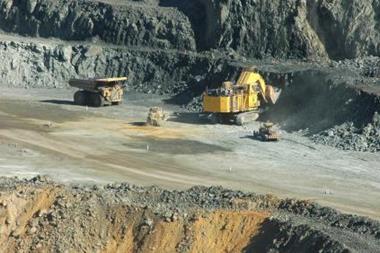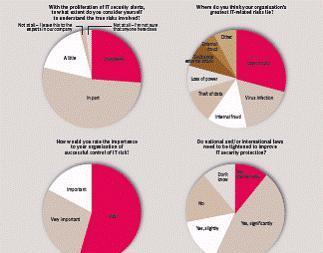StrategicRISK's Benchmarking Club respondents confirm that most European companies are well aware of their potential environmental liabilities.
The introduction of so-called 'sudden and accidental' pollution exclusion (somewhat of a misnomer since it actually excluded gradual pollution) in insurance liability policies in the 1970s and 1980s, was accompanied by a burgeoning of EU environmental protection regulation, the growing influence of NGOs and green lobbyists and, arguably even more important, the development of the internet, with the instant ability to name and shame polluting companies. So coming to grips with the need to identify and manage their potential environmental liabilities has not been too steep a learning curve for risk managers.
Most of the people responding to our survey (86%) said that they or their organisations regularly identify environmental risks - and any changes to environmental risks - on a formal basis. However, while this is a significant majority, it still indicates that a few organisations are not putting environmental liability up there with the big three: employer's, public and product liability.
And, in fewer than half (43%) of those organisations surveyed is this review conducted by a specific environmental manager. In 27%, it comes under the aegis of the risk manager or chief risk officer, and in 16% the health and safety manager, while in the remainder other executives, including the chief financial officer, the facilities manager and those others involved in contracts or purchases have control.
Almost a third of our respondent companies conduct their formal review of environmental risks annually. This seems a respectable time line if they are not engaged in corporate transactions or other expansion into new areas. Forty one per cent, presumably those organisations which are more (or perhaps less) involved in new activities, said that they reviewed their potential environmental liabilities as and when new potential risks emerge. But it was a continuous process for very few.
In response to our question as to whether organisations use external environmental consultants, there was a considerable split in views. More than half (58%) said that they did; 40% said that they did not and two per cent did not know. So no real consensus here.What is mainly driving the focus on environmental risk management? We gave our respondents four possible answers - the need to comply with regulation, corporate governance best practice, reputational considerations and 'other'. More than half (53%) admitted it was regulation. Thirty per cent said it was corporate governance best practice and just 12% were concerned about reputational considerations. The others mentioned their certified ISO 14001 management system, client demands and funders' concerns.
The answers are honest but hardly altruistic - no talk about 'saving the planet', 'preserving our children's future', and so on. Perhaps all such soft issues are intrinsic in corporate governance best practice and reputational considerations.
Twenty eight per cent of respondents thought that their potential exposure to environmental liability risks (without risk management measures) would have been very high or quite high. The remainder, however, put their risk at average or lower.
Where does this potential exposure come from? No doubt reflecting regulatory changes, many respondents attributed it to their own past operations or those of acquisitions or subsidiaries. But interestingly, the majority of respondents (56%) did not consider that they faced a potential environmental risk from any of these sources.
Comfortingly, 93% of our respondents appear to be managing their environmental exposures. Sixty five per cent said that they felt they were adequately protected against their environmental liability risk, 21% considered they were very well protected, and 7% rated their protection higher than that.While the spectre of gradual pollution and the attendant potential long tail liabilities has to be the most concerning aspect for many organisations, we also asked about the processes in place for dealing with incidents of sudden, accidental pollution. Sixty seven per cent of our respondents have formal written processes for dealing with such incidents, an alarming 26% do not, and the remainder of our respondents simply did not know.
There are few organisations that have no potential environmental liability risk. Apart from risk mitigation, how do they deal with it? Is it off the balance sheet or by risk transfer? Our respondent organisations clearly have a range of strategies, which include transfer to the commercial insurance market, the use of appropriate contract terms, and captive insurance. No single strategy earned more than 40% of the votes.
Where does the threat come from in geographic terms? Our respondents were evenly divided here, with half saying that future environmental claims were most likely to come from their domestic market, and half naming the most likely source as activities or subsidiaries in other markets.
There was more agreement when respondents considered the three most important stakeholders in terms of their organisations' environmental risks. This was an opportunity for multiple answers so the percentages will not add up, but by far the winning category (cited by 77% of respondents) were communities near organisations' operating locations. The authorities/regulators were cited second (51%), while employees (47%), shareholders (44%), and the local ecosystem (40%) also scored highly. A long way behind were special interest groups such as NGOs (12%) and the world ecosystem (5%). Interestingly, one respondent mentioned consumers viewing the corporate advertisements.Finally, let us look at some of the individual comments.
- "Environmental liability is a serious threat to existing established organisations. Climate change is increasing the level of potential risk and insufficient measures are being taken to reverse or counteract the effects of it. The agile and risk aware businesses will harness these effects and capitalise upon them."
- "Developing countries could become more litigious, 10 to 20 years ahead, over a legacy of foreign operations."
- "Environmental risks are very much in focus as handling them wrongly may very soon get you out of business."
- "I work for a local authority in an area with an industrial legacy. These have implications for ongoing and future development."
Sue Copeman is editor, StrategicRISK
Sponsors column
Not surprisingly, the spate of environmental regulation that we have seen in the last few years has focused organisations' attention on the need to manage their environmental risks better - and most consider that they now have these risks under better control. It seems likely, however, that some organisations falsely assume that their standard liability policies are providing more cover in respect of pollution incidents than is actually the case.
Handling actual pollution incidents can place a significant burden on organisations and is likely to require the use of specialist environmental consultants. The potential for resulting business interruption can be highly significant and Organisations may need help in pre and post loss planning. In the event of loss this will help in restoring the business and minimising the overall cost for all the stakeholders in the business.For further information about Crawford & Co please visit www.crawco.co.uk contact Paul Bermingham, Director, Corporate Multinational Risks on +44 20 7220 1562.















